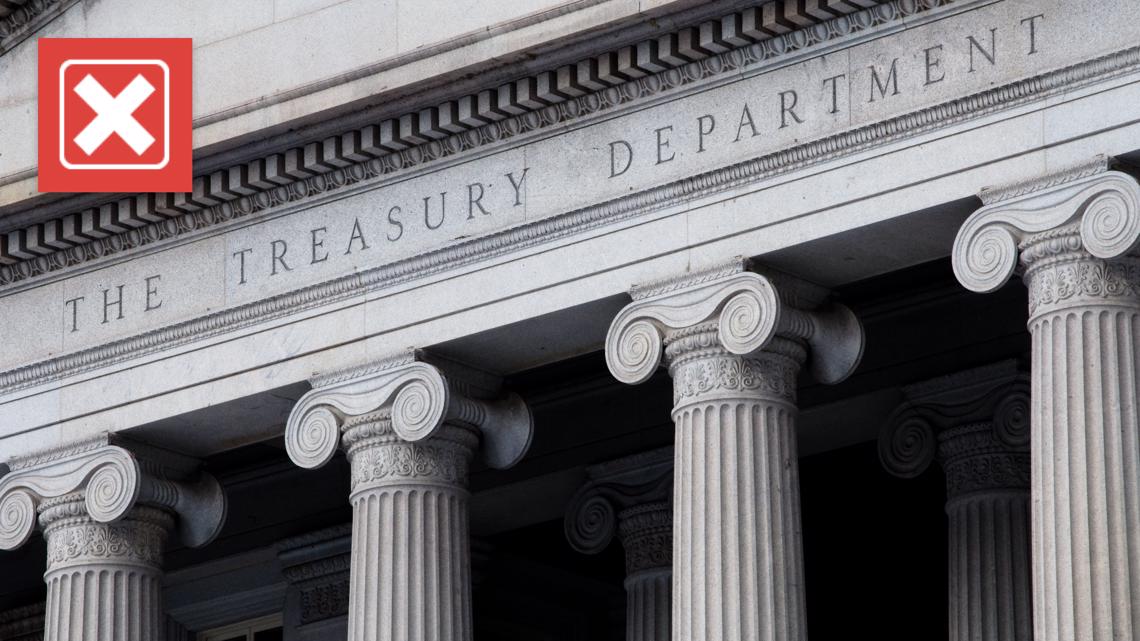Several readers have asked about the debt ceiling and what will happen if Congress doesn’t raise it by the deadline. Validate your answers to five key questions.
The US reached its debt ceiling, also known as the “debt ceiling”, on Thursday, January 19th. urge the Treasury Take “special measures” to continue paying federal bills.
Several readers, like Ryan and Kathy, reached out to VERIFY with questions about the debt ceiling, including when it was last raised and how the country’s debt is calculated.
Here are the verified answers to five key questions about the debt ceiling.
source of information
what we found
What is national debt?
Before answering what the debt ceiling is, we need to understand national debt.
national debt is Currently about $31.5 trillionis the amount borrowed by the federal government to cover its expenses.
Kathleen Day, a professor of finance at the Johns Hopkins Carey School of Business, described the national debt as “an accumulation of deficits over many years.”
budget deficit The result of spending more money in a given year than the government receives from taxes and other sources. The Treasury Department has to borrow money to keep the federal government paying its bills.
What is the debt ceiling?
of Current Federal Debt Limitalso known as the debt ceiling, is $31.4 trillion.
But what exactly is the debt ceiling? This is a congressionally imposed limit on the amount the federal government can borrow to meet existing legal obligations. These obligations include Social Security and Medicare benefits, military salaries, interest on government bonds, tax refunds, and other payments. the finance ministry says.
Debt limit increases or suspensions will not authorize new spending or burden taxpayers, Treasury Secretary Janet Yellen wrote in a letter to Congress January 13, 2023.
The debt limit was established in 1917 by the Second Liberty Bond Act. According to the Federal Responsible Budget Board (CRFB).
Before the debt ceiling, “debt was micromanaged by Congress, not by the Treasury,” explained Louise Shainer, an economics fellow at the Brookings Institution.
More from VERIFY: Yes, House Republicans introduced legislation to create a domestic sales tax, eliminating the need for the IRS
When was the last time the debt ceiling was raised?
VERIFY reader Ryan asked if the debt ceiling was the last to be raised during the administration of former President Barack Obama. The debt ceiling was actually raised more recently than that.
Congress, December 2021 passed law Raise the debt ceiling by $2.5 trillion to the current ceiling of about $31.4 trillion.
Congress has approved more than 100 individual changes to the debt ceiling since the end of World War II, according to a November 2022 report. Report from the Congressional Research Service (CRS). The debt ceiling has been raised 20 times since his 2001.
“Rising spending on old-age and retirement programs, declining tax revenues, federal action related to the Great Recession, and response to the COVID-19 pandemic have all contributed to rising debt levels,” CRS reports. I am writing to
What happens when the US hits the debt ceiling?
Even if the U.S. hits the debt ceiling like it does in 2023, obligations like Social Security and Medicare benefits won’t automatically default.
The Treasury cannot borrow any more money once the debt ceiling is reached, but it can implement so-called “special measures” to continue paying federal bills.Ministry of Finance indicated that they had initiated those measures January 19, 2023.
These measures include measures such as withholding contributions to retirement funds for civil servants, but will exchange the money later, Sheiner explained. But these measures don’t affect the average American’s wallet on a daily basis, she said.
“Extraordinary measures are just a way to get around the debt ceiling,” Shainer said.
What happens if Congress doesn’t raise the debt ceiling by the deadline?
It’s unclear exactly what will happen if Congress doesn’t reach an agreement on the debt ceiling in time and the Treasury Department runs out of cash on hand.
“[The Treasury is] They’re basically facing two sets of conflicting laws: they can’t borrow, interest payments, Social Security beneficiaries, and hospitals that cover Medicare beneficiaries have these payments. I have to,” said Shaner.
In the event of default, the federal government could have to default or delay payments to Social Security and Medicare beneficiaries, salaries of government employees, and more, Sheiner and Day explained.
The Federal Government “has not experienced a serious default in its financial obligations since the War of 1812.” Bipartisan Policy Center says.
If the federal government fails to meet its obligations, financial experts like Mr. Day warn that the consequences could be disastrous.
A default would “destroy our reputation” in the global economy and the cost of borrowing at home would rise “astronomically,” Day said. The stock market is also likely to fall, and millions of jobs could be lost, she added.
follow us
want to check something?
https://www.wtol.com/article/news/verify/economy-verify/what-is-us-debt-ceiling-extraordinary-measures-congress-deadline-2023/536-f2804f9b-ceb3-480f-8366-98006b9ede3b The US has reached its debt ceiling.Here’s what this means
